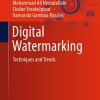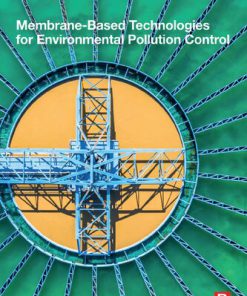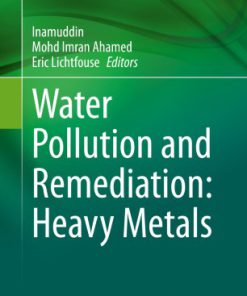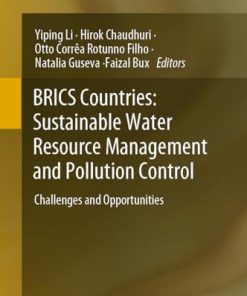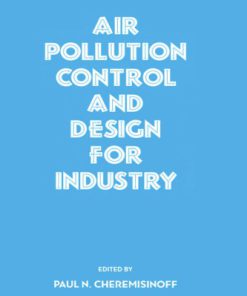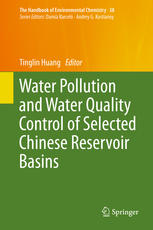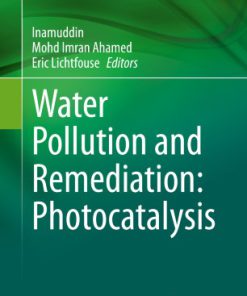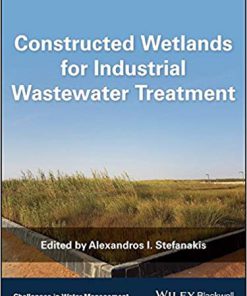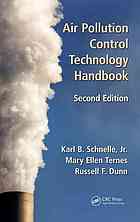Wetlands for Water Pollution Control 2nd Edition by Miklas Scholz 0444636072 9780444636072
$50.00 Original price was: $50.00.$25.00Current price is: $25.00.
Wetlands for Water Pollution Control 2nd Edition by Miklas Scholz – Ebook PDF Instant Download/DeliveryISBN: 0444636072, 9780444636072
Full download Wetlands for Water Pollution Control 2nd Edition after payment.
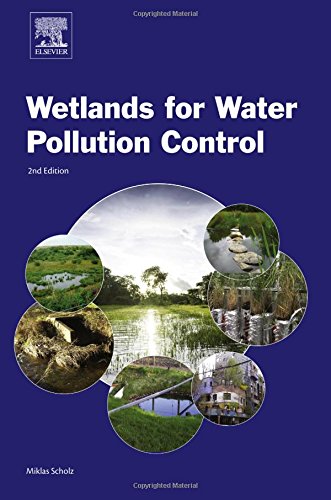
Product details:
ISBN-10 : 0444636072
ISBN-13 : 9780444636072
Author: Miklas Scholz
Wetlands for Water Pollution Control, Second Edition, covers the fundamental science and engineering principles relevant to the drainage and treatment of both storm and wastewater. Standard and novel design recommendations for predominantly constructed wetlands and related sustainable drainage systems are also provided to account for the interests of professional engineers and environmental scientists.
This revised edition deals with the design, operation, maintenance, and water quality monitoring of traditional and novel wetland systems, but also provides information on the analysis of asset performance and modeling of treatment processes, along with performances of existing infrastructures in predominantly developed, but also developing countries, and the sustainability and economic issues involved.
This new edition contains 10 new chapters, along with multidisciplinary, experimental, and modeling-orientated case study topics that include natural wetlands, constructed treatment wetlands for pollution control, sustainable drainage systems, and specific applications, such as wetlands treating hydrocarbon and ammonia, as well as ecological sanitation systems recycling treated.
Wetlands for Water Pollution Control 2nd Table of contents:
Chapter 1. Water Quality Standards
1.1. Introduction and Historical Aspects
1.2. Water Quality Standards and Treatment Objectives
1.3. Biochemical Oxygen Demand
1.4. Chemical Oxygen Demand
1.5. Other Variables Used for the Characterization of Wastewater
Chapter 2. Water Treatment
2.1. Sources of Water
2.2. Standard Water Treatment
2.3. Basic Water Chemistry
Chapter 3. Sewage Treatment
3.1. Introduction
3.2. Design Flow Rates
3.3. Treatment Principles
3.4. Engineering Classification of Sewage Treatment Stages
Chapter 4. Stream Pollution and Effluent Standards
4.1. Organic Stream Pollution
4.2. Prediction of Organic Stream Pollution
4.3. Effluent Discharge Standard Principles
Chapter 5. Preliminary Treatment
5.1. Introduction
5.2. Design of Screening Units
5.3. Design Details for Screening Units
5.4. Comminutors
5.5. Grit Removal
Chapter 6. Primary Treatment
6.1. Introduction
6.2. Loading Rate Methods
6.3. Tank Design
6.4. Design Parameters
6.5. Economics of Construction
6.6. Design Details
6.7. Hydraulic Losses
6.8. General Design Details
6.9. Details of Various Types of Sedimentation Tanks
6.10. Sedimentation Aids
Chapter 7. Coagulation and Flocculation
7.1. Theory of Settling
7.2. Classification of Settling Behavior
7.3. Ideal Settling
7.4. Introduction to Coagulation and Flocculation
7.5. Colloidal Suspensions
7.6. Coagulation Processes
7.7. Coagulation Chemicals
7.8. Operation of the Coagulation and Flocculation Process
7.9. Rapid Mixing
7.10. Flocculation
Chapter 8. Sludge Blanket Clarifiers
8.1. Introduction to Sludge Blanket Clarification Systems
8.2. Types of Sludge Blanket Clarifier
8.3. Plate Settling in Sludge Blanket Clarifiers
Chapter 9. Flotation Systems
9.1. Flotation Using Blown Air
9.2. Flotation Using Dissolved Air
9.3. Flotation Units
Chapter 10. Slow Filtration
10.1. Introduction
10.2. Slow Sand Filtration
10.3. Algal Actions
10.4. Advantages and Disadvantages
Chapter 11. Rapid Filtration
11.1. Elements of a Rapid Sand Filter
11.2. Sand Bed
11.3. Underdrain System
11.4. Hydraulics of Filtration
11.5. Comparison with Slow Sand Filter
Chapter 12. Biological Treatment
12.1. Aerobic Self-Purification
12.2. Waste Stabilization Ponds
Chapter 13. Biological Filtration
13.1. Introduction
13.2. Trickling Filter
13.3. Basic Ecology
13.4. Process Variants
13.5. Design of Biological Filters
Chapter 14. Rotating Biological Contactors
14.1. Introduction
14.2. Principles of Operation
14.3. Design and Loading Criteria
14.4. Principle Elements
14.5. Operational Problems
Chapter 15. Activated Sludge Processes
15.1. Background
15.2. Activated Sludge Process
15.3. Comparison between the Activated Sludge Process, Percolating Filtration, and Wetland System
15.4. Activated Sludge Process Types
15.5. Activated Sludge Process Designs and Kinetics
15.6. Summary of Key Process Design Criteria
Chapter 16. Iron and Manganese Removal
16.1. Introduction
16.2. Basic Removal Processes
16.3. Advanced Removal Processes
Chapter 17. Water Softening
17.1. Introduction
17.2. Lime-Soda Softening
17.3. Lime Softening
17.4. Excess Lime Softening
17.5. Lime Recovery
Chapter 18. Water Microbiology
18.1. Statistics for Applied Microbiology
18.2. Protozoa
18.3. Biological Effects of Organic Pollutants
18.4. Eutrophication and Water Treatment
18.5. Protozoology of Treatment Processes
18.6. Odor and Toxins of Natural Origin
18.7. Public Health Aspects
Chapter 19. Disinfection
19.1. Destroying Pathogens and Requirements of a Disinfectant
19.2. Traditional Methods of Disinfection
19.3. Ozone
19.4. Chlorine Dioxide and Chlorine as Disinfectants
19.5. Kinetics of Chlorination
19.6. Applications of Chlorine
19.7. Technology of Chlorine Addition
19.8. Advantages and Disadvantages of Chlorine
Chapter 20. Constructed Wetlands
20.1. Background
20.2. Definitions
20.3. Hydrology of Wetlands
20.4. Wetland Chemistry
20.5. Wetland Ecosystem Mass Balance
20.6. Macrophytes in Wetlands
20.7. Physical and Biochemical Parameters
20.8. Examples for Natural and Constructed Wetlands
Chapter 21. Sludge Treatment and Disposal
21.1. Introduction
21.2. Tests for Dewatering of Sludge
21.3. Sludge Treatment and Disposal Objectives and Methods
21.4. Treatment Processes
21.5. Thickening and Dewatering of Sludges
21.6. Partial Disposal
21.7. Land Dumping and Passive Treatment
Chapter 22. Wetlands Treating Contaminated Stream Water
22.1. Introduction
22.2. Materials and Methods
22.3. Results and Discussion
22.4. Conclusions
Chapter 23. Wetland Systems to Control Roof Runoff
23.1. Introduction
23.2. Methods
23.3. Results and Discussion
23.4. Conclusions
Chapter 24. Wetlands Treating Road Runoff
24.1. Introduction
24.2. Site, Materials, and Methodology
24.3. Experimental Results and Discussion
24.4. Conclusions and Further Work
Chapter 25. Combined Wetland and Below-ground Detention Systems
25.1. Introduction
25.2. Materials and Methods
25.3. Results and Discussion
25.4. Conclusions and Further Research
Chapter 26. Modeling of Constructed Wetland Performance
26.1. Introduction
26.2. Methodology and Software
26.3. Results and Discussion
26.4. Conclusions
Chapter 27. Infiltration Wetland Systems
27.1. Introduction
27.2. Methods
27.3. Results and Discussion
27.4. Conclusions
Chapter 28. Retrofitting of Sustainable Drainage Systems in the Presence of Vegetation
28.1. Introduction
28.2. Methodology
28.3. Results and Discussion
28.4. Conclusions and Recommendations
Chapter 29. Expert Tool Based on Ecosystem Variables for Retrofitting of Wetland Systems
29.1. Introduction
29.2. Methodology
29.3. Results and Discussion
29.4. Conclusions and Recommendations
Chapter 30. Sustainable Drainage System Model
30.1. Introduction
30.2. Sites, Methodology, and Modeling
30.3. Results and Discussion
30.4. Conclusions
Chapter 31. Natural Wetlands Treating Diffuse Pollution
31.1. Introduction
31.2. Materials and Methods
31.3. Results
31.4. Discussion
31.5. Conclusions and Recommendations
Chapter 32. Integrated Constructed Wetlands for Pollution Control
32.1. Introduction
32.2. Case Study Sites, Materials, and Methodologies
32.3. Results and Discussion
32.4. Conclusions and Recommendations
Chapter 33. Infiltration and Contaminant Migration beneath Integrated Constructed Wetlands
33.1. Introduction
33.2. Case Study, Materials, and Methods
33.3. Results and Discussion
33.4. Conclusions and Recommendations
Chapter 34. Seasonal Assessment of Vertical-Flow Wetlands Treating Domestic Wastewater
34.1. Introduction
34.2. Materials and Methods
34.3. Results and Discussion
34.4. Conclusions and Recommendations
Chapter 35. Recycling of Domestic Wastewater Treated by Vertical-Flow Wetlands for Irrigation
35.1. Introduction
35.2. Methodology
35.3. Results and Discussion
35.4. Conclusions and Recommendations
Chapter 36. Piggery Wastewater Treatment with Integrated Constructed Wetlands
36.1. Introduction
36.2. Site, Materials, and Methods
36.3. Results and Discussion
36.4. Conclusions and Recommendations
Chapter 37. Wetland Systems as Part of the Sustainable Flood Retention Basin Concept
37.1. Introduction
37.2. Assessment of Classification Variables
37.3. Conclusions and Recommendations for Further Work
Chapter 38. Classification of Sustainable Flood Retention Basins
38.1. Introduction to Traditional Classification
38.2. Traditional Methodology
38.3. Discussion of the Traditional Method
38.4. Introduction to Multilabel Classification
38.5. Data and Methodology
38.6. Experimental Results and Discussion
38.7. Representative Case Studies
38.8. Conclusions and Recommendations
People also search for Wetlands for Water Pollution Control 2nd:
how to wetlands improve water quality
how does wetlands remove pollution from water
how are wetlands water quality threatened by pollution
how do wetlands remove pollution from water
wetlands pollution control
Tags: Wetlands, Water Pollution, Miklas Scholz, fundamental science
You may also like…
Cookbooks
Earth Sciences - The Environment
Engineering
Water Pollution and Remediation Photocatalysis 1st edition by Inamuddin 303054723X 9783030547233
Engineering Biology and other natural sciences - Ecology
Air pollution control technology handbook Second Edition Dunn



